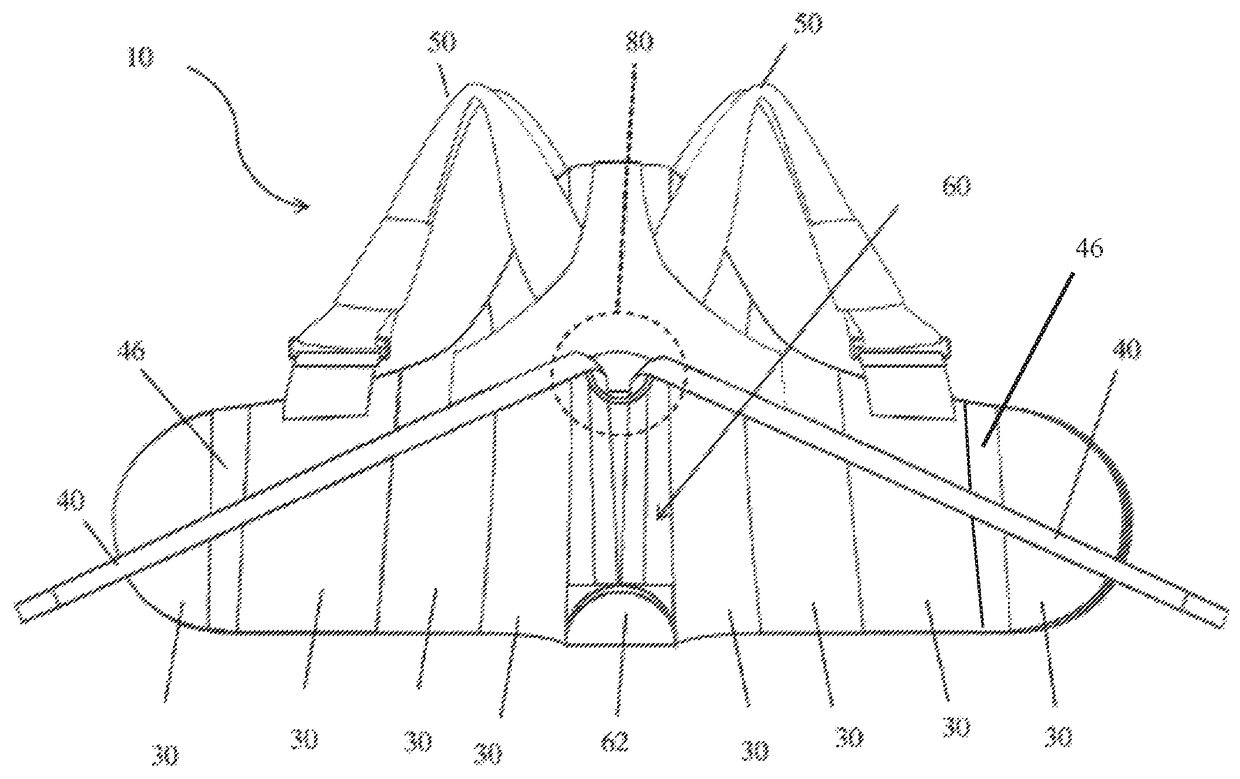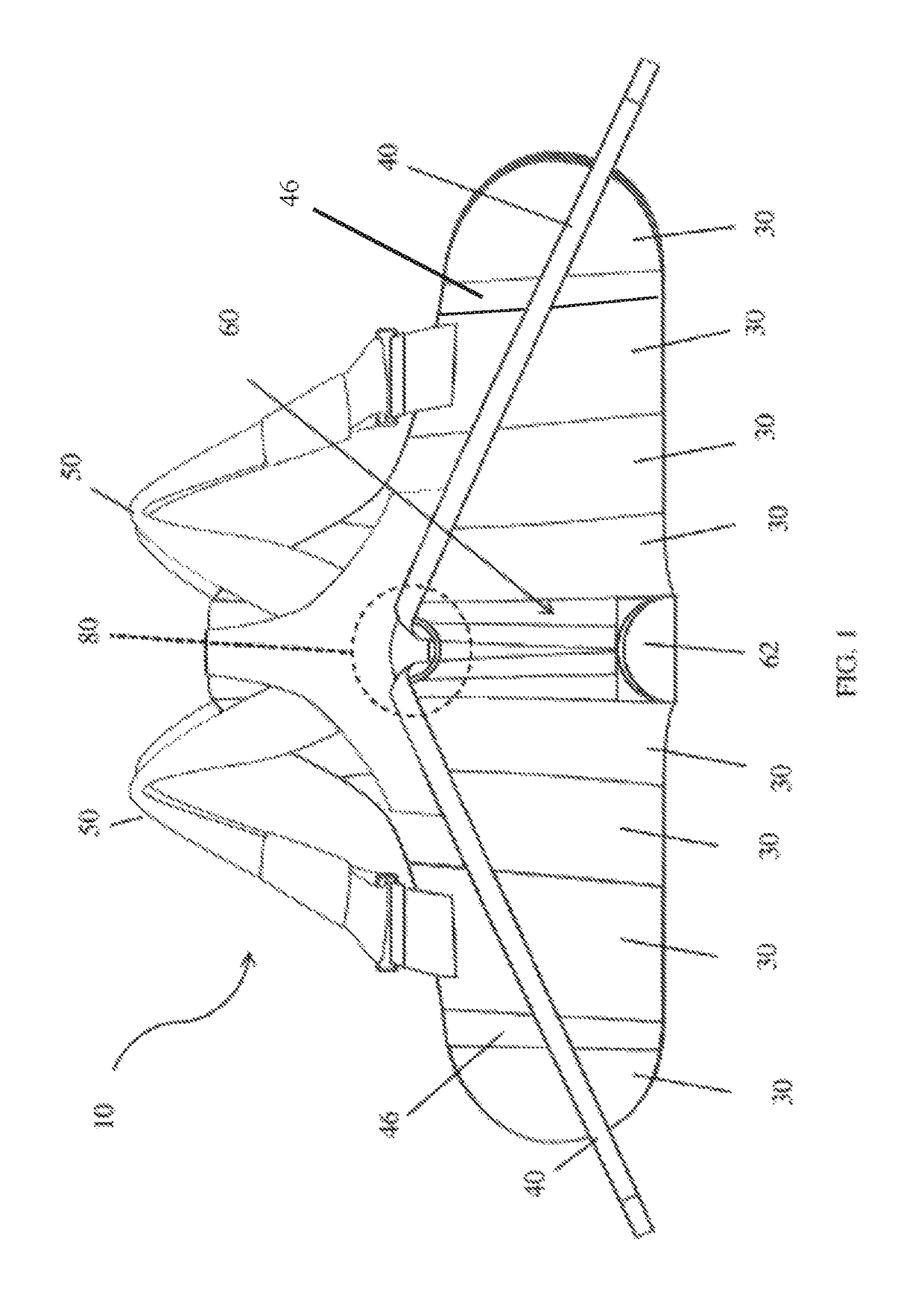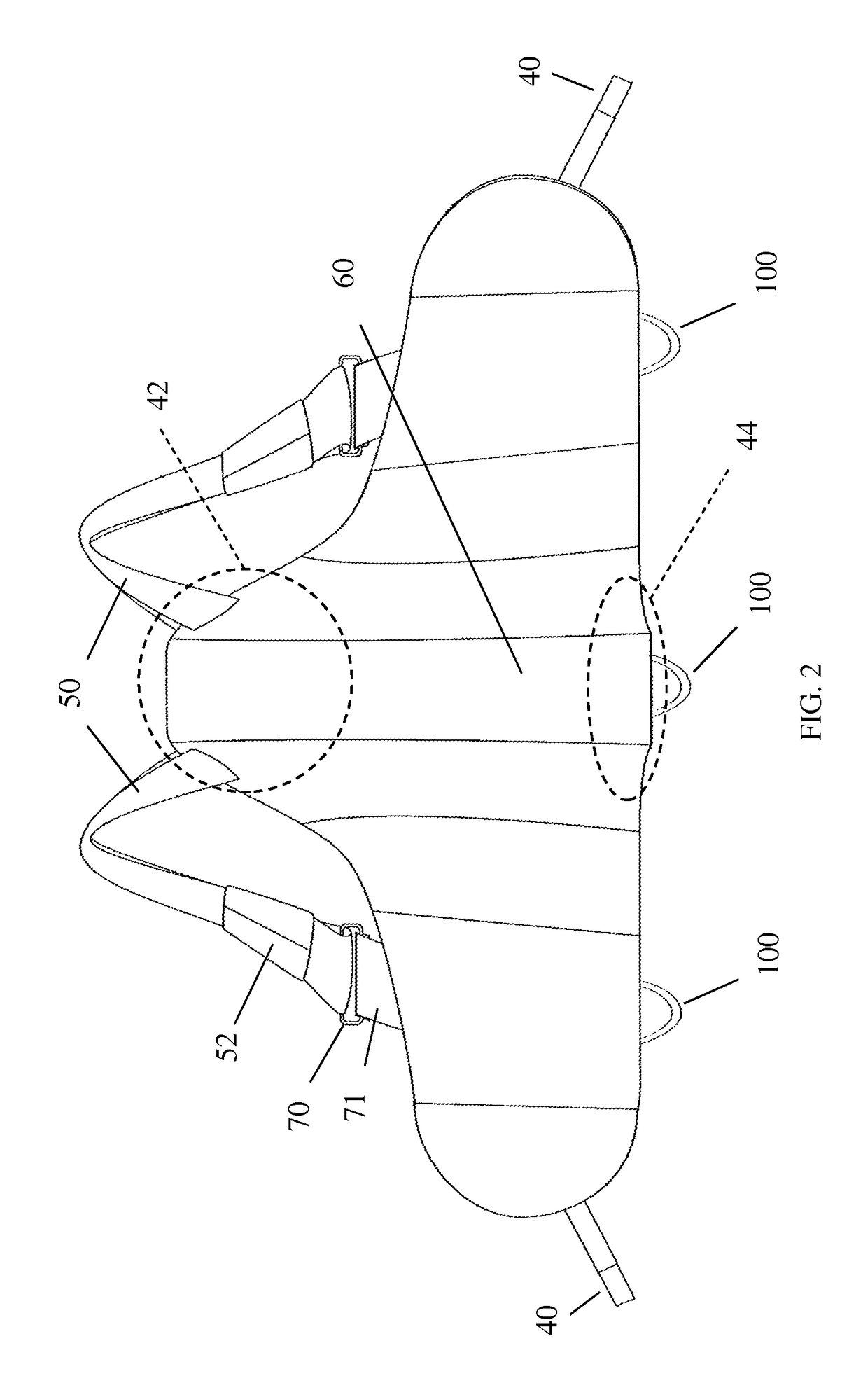Physiotherapeutic, ambulatory, and mobility vest
a technology of mobility vests and ambulatory devices, applied in the field of physiotherapy devices, can solve the problems of not providing support and proper force vector tensioning to assist users in maintaining balance and posture, and often experiencing muscle rigidity problems in the posture and balance of neurodegenerative diseases
- Summary
- Abstract
- Description
- Claims
- Application Information
AI Technical Summary
Benefits of technology
Problems solved by technology
Method used
Image
Examples
Embodiment Construction
[0024]The following description is of an embodiment presently contemplated for carrying out the present invention. This description is not to be taken in a limiting sense, but is made merely for the purpose of describing the general principles and features of the present invention. The scope of the present invention should be determined with reference to the claims.
[0025]Referring now to FIGS. 1 and 2, external and internal views of the device 10 are disclosed.
[0026]The device 10 may include a vest 20 segmented into a plurality of segment panels 30 with waist straps 40, shoulder straps 50, a support member 90, and a tensioner mechanism 80. A waist tensioning system of the vest 20 may include the waist straps 40, shoulder straps 50, and tensioner mechanism 80. A spine support system of the vest 20 may include the support member 90 and plurality of segment panels 30. As disclosed herein, the waist tensioning system and the spine support system may operate in concert to enable correcti...
PUM
 Login to View More
Login to View More Abstract
Description
Claims
Application Information
 Login to View More
Login to View More - R&D
- Intellectual Property
- Life Sciences
- Materials
- Tech Scout
- Unparalleled Data Quality
- Higher Quality Content
- 60% Fewer Hallucinations
Browse by: Latest US Patents, China's latest patents, Technical Efficacy Thesaurus, Application Domain, Technology Topic, Popular Technical Reports.
© 2025 PatSnap. All rights reserved.Legal|Privacy policy|Modern Slavery Act Transparency Statement|Sitemap|About US| Contact US: help@patsnap.com



